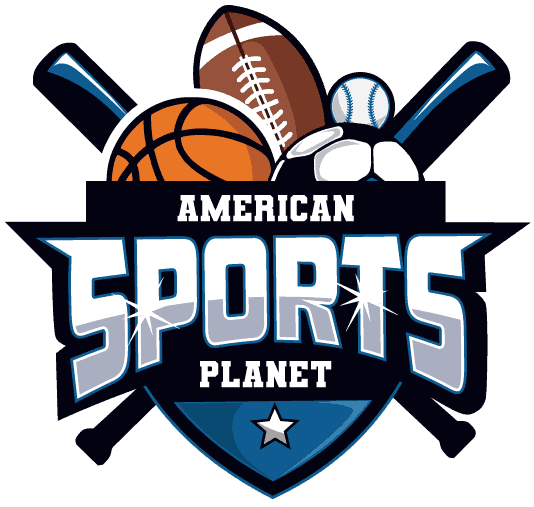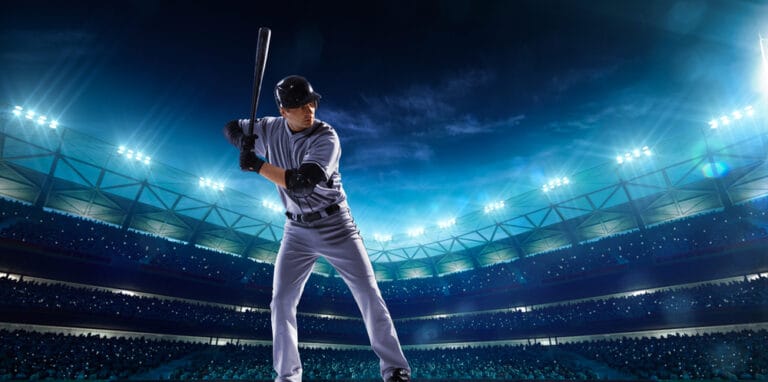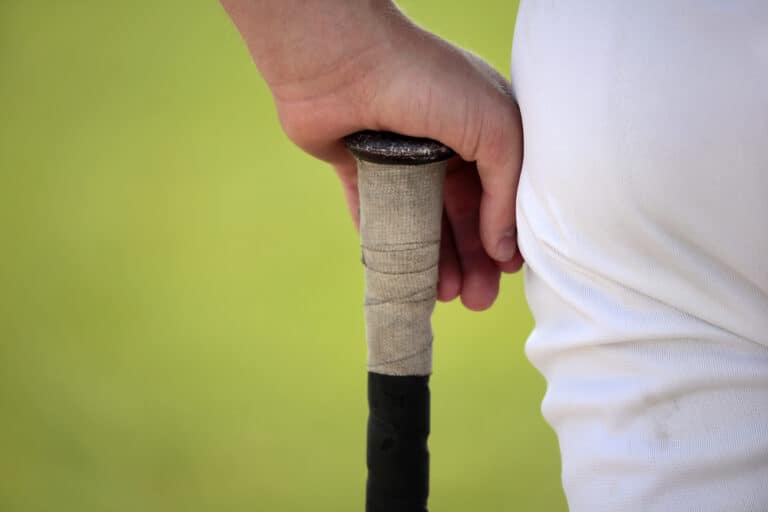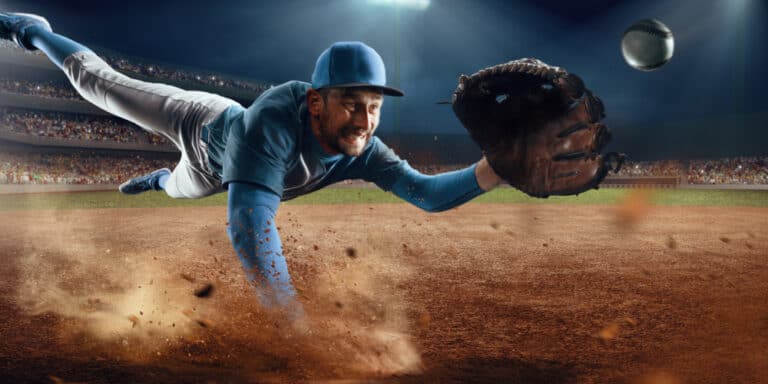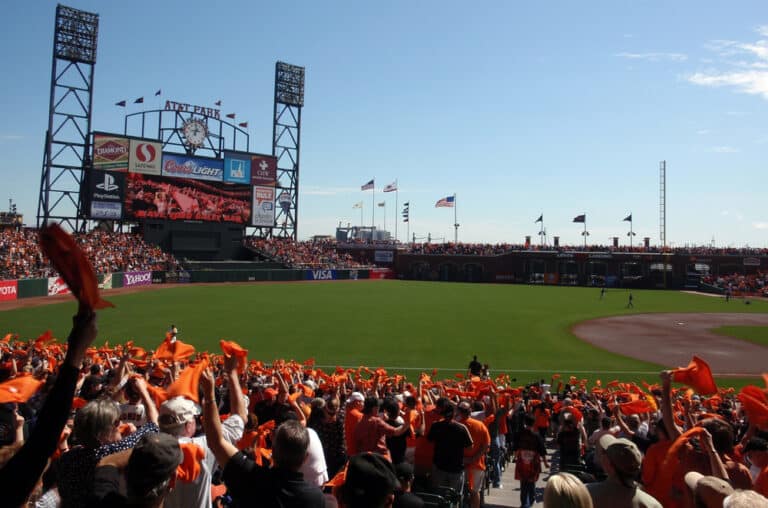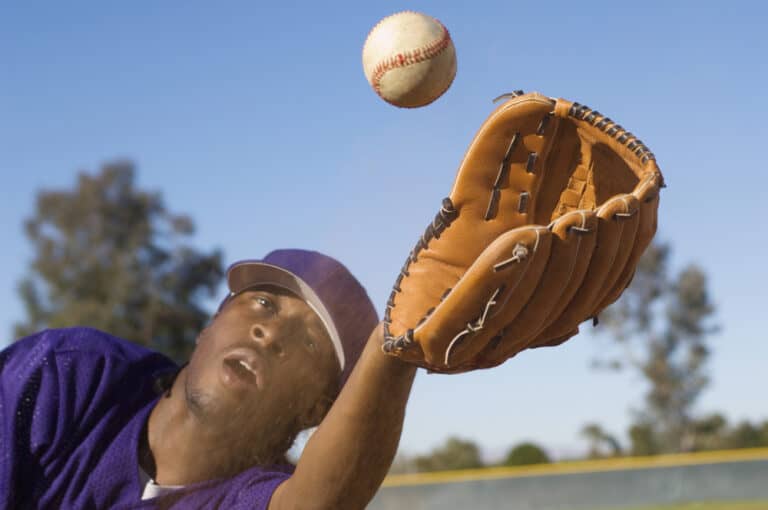Do Baseball Players Wear Helmets? (All You Need To Know)
Editorial credit: YES Market Media / Shutterstock.com
There are very specific guidelines in place to govern the wearing of helmets by baseball players. These rules are governed by the Major League Baseball (MLB) association. The safety of the Baseball player and support staff is the main reason for wearing a helmet.
Not all Baseball players are always required to wear a helmet while participating in a baseball game. Two criteria govern the wearing of a helmet by a player. The criteria are the league in which the player participates and the position being played.
Several baseball leagues adhere to Major League Baseball’s regulations regarding the wearing of helmets by baseball players. However, Minor League Baseball, including Little League, has its own rules. Veteran players also have their own set of rules.
Must Baseball Players Wear Helmets?
Baseball players must wear helmets as regulated by the Major League Baseball (MLB) association and dependent upon the league in which the Baseball player is competing. It is also regulated by the position played by the Baseball player within that league.
Below are some of the Baseball leagues within the USA.
- Major League Baseball.
- Independent Baseball.
- College Baseball.
- High School Baseball.
- Minor League Baseball.
Below is a list of the Baseball player positions and support staff.
- Pitcher.
- Catcher.
- First Baseman.
- Second Baseman.
- Third Baseman.
- Shortstop.
- Left Fielder.
- Center Fielder.
- Right Fielder.
- Base coach.
- Ball boy/girl.
The regulations below pertain to all the leagues mentioned except Minor League Baseball. The rules are also defined for specific Baseball player positions within these leagues.
The Major League Baseball association’s regulations regarding the wearing of helmets by Baseball players are governed as follows.
- All Baseball players must wear a protective helmet while at bat and running bases.
- All Catchers must wear a protective helmet and a face mask while receiving a pitch.
The specifications of the Baseball helmet are as follows,
- The protective helmet must have the minimum requirement of a single ear flap.
- MLB Baseball players can wear a double ear flap helmet if they wish.
The MLB also stipulates a regulation regarding support staff of the Baseball game.
- All Base Coaches are instructed to wear a protective helmet while performing their duties.
- All Bat/Ball boys and girls must wear a double ear flap protective helmet while performing their duties.
Minor League Baseball Player Helmet Regulations
The rule of all Baseball players in Minor League wearing helmets is as follows.
- All Minor League Baseball players must wear a double ear flap helmet regardless of their position.
This rule ensures that younger players have better protection from the possibility of serious injury by protecting both ears.
Veteran Baseball Player Helmet Regulations
The rule of all Veteran Baseball players wearing helmets is as follows.
- All Veteran Baseball players are permitted to have the choice not to wear a Baseball Helmet if they choose, regardless of what position they are playing.
Instead of wearing a Baseball helmet, Veterans are permitted to wear an insert beneath their caps in place of a helmet.
This rule gives the Veteran Baseball player the privilege of playing more freely without a helmet and is based on the veteran’s knowledge and skill of the game.
Consequences Of Baseball Players Not Wearing A Helmet
The MLB regulations regarding Baseball players wearing helmets clearly state that an umpire may penalize a player not wearing a helmet by removing them from the game. In addition, the umpire may also impose disciplinary action after the game.
Reasons For And Against Baseball Players Wearing Helmets
The obvious reason for a Baseball Player to wear a helmet is related to the player’s safety. In MLB, the pitcher can pitch a ball at 90 – 100 miles per hour. If the ball were to strike a player’s head while not wearing a helmet, the player could suffer a severe head injury.
The types of damage that could affect a Baseball player not wearing a helmet include concussion, bleeding and bruising to the ear, skull fracture, facial injury, and bleeding on the brain. In severe cases, a player’s injury could be fatal.
Players in the position of batting and running between bases are required to wear a helmet while playing. This is because the Batter is in the direct line of the ball being pitched. A Baseball player running between bases is also in the direct line of the ball being thrown to the baseman by a fielder. The safety of a player not wearing a helmet may be compromised.
The catcher could also be injured if not wearing a helmet because he is positioned behind the Batter in the direct line of the ball being pitched. If the Batter does not strike the ball or if the Batter deflects the ball, the safety of the catcher could be at risk.
Pitchers do not wear helmets due to the possibility of injury, which increases with wearing a helmet. If a pitcher wears a helmet during pitching, it may slip off or fall over their eyes.
Types Of Helmets Worn By Baseball Players
There are essentially two types of helmets regulated by the MLB for use by Baseball players. These are single ear flap and double ear flap helmets.
The reason for a single ear flap helmet being worn by a player is so that the player is protected on the ear facing the incoming ball. No flap on the helmet covering the non-facing ear makes it easier for the player to hear instructions from the coach and umpire.
The regulation stipulates that all Minor League Baseball players must wear a double ear flap helmet. This type of helmet offers extra protection to younger players by covering both ears.
All Baseball helmets worn by Baseball players must be certified by NOCSAE (National Operating Committee On Standards For Athletic Equipment).
It is also crucial that all helmets worn by Baseball players are fitted correctly to provide the best possible protection. All Baseball helmets should fit the player snugly. The helmet should not be too loose, causing it to fall off or over the player’s eyes.
The ear holes should line up with the player’s ears. The bill of the Batter’s helmet should be parallel to the ground, and the player’s eyes should be visible. There should be no spaces between the helmet and the player’s head. The Baseball player should wear nothing underneath the Baseball helmet.
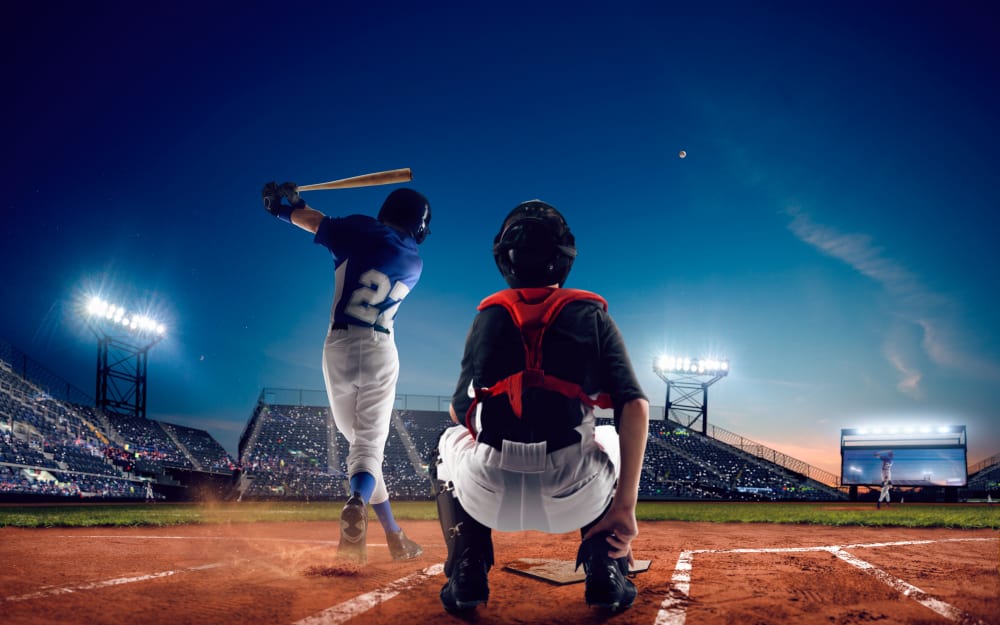
Conclusion
The wearing of a helmet by a Baseball player is determined by the MLB regulations governing the Baseball leagues. These rules are dependent on the league in which the player is participating. It is also based on the position being played by the player.
The MLB rules are regulated to ensure the safety of a Baseball player concerning wearing a helmet. It is also essential that the helmet should be correctly fitted and NOCSAE certified to provide the best protection against possible injury.
